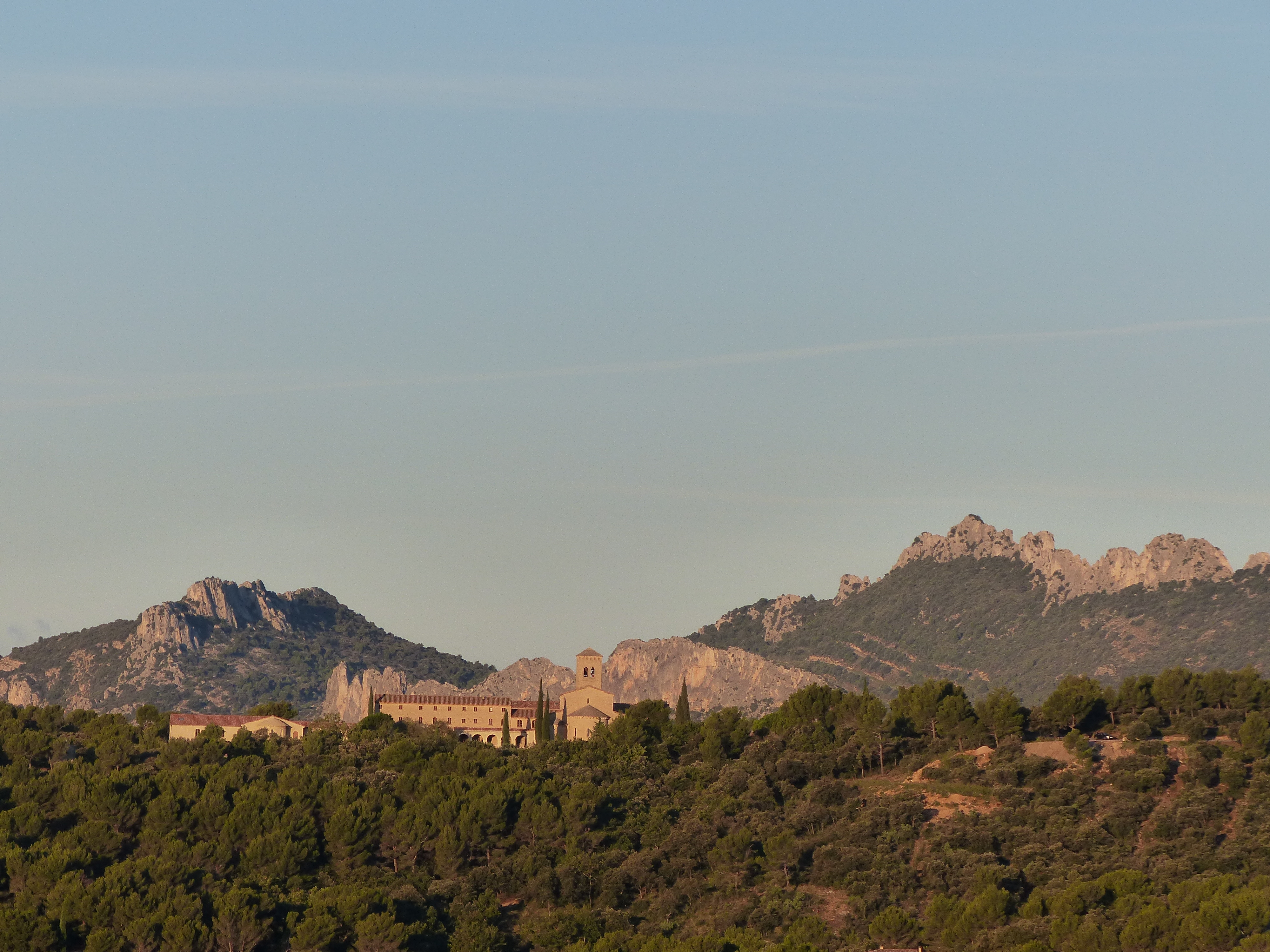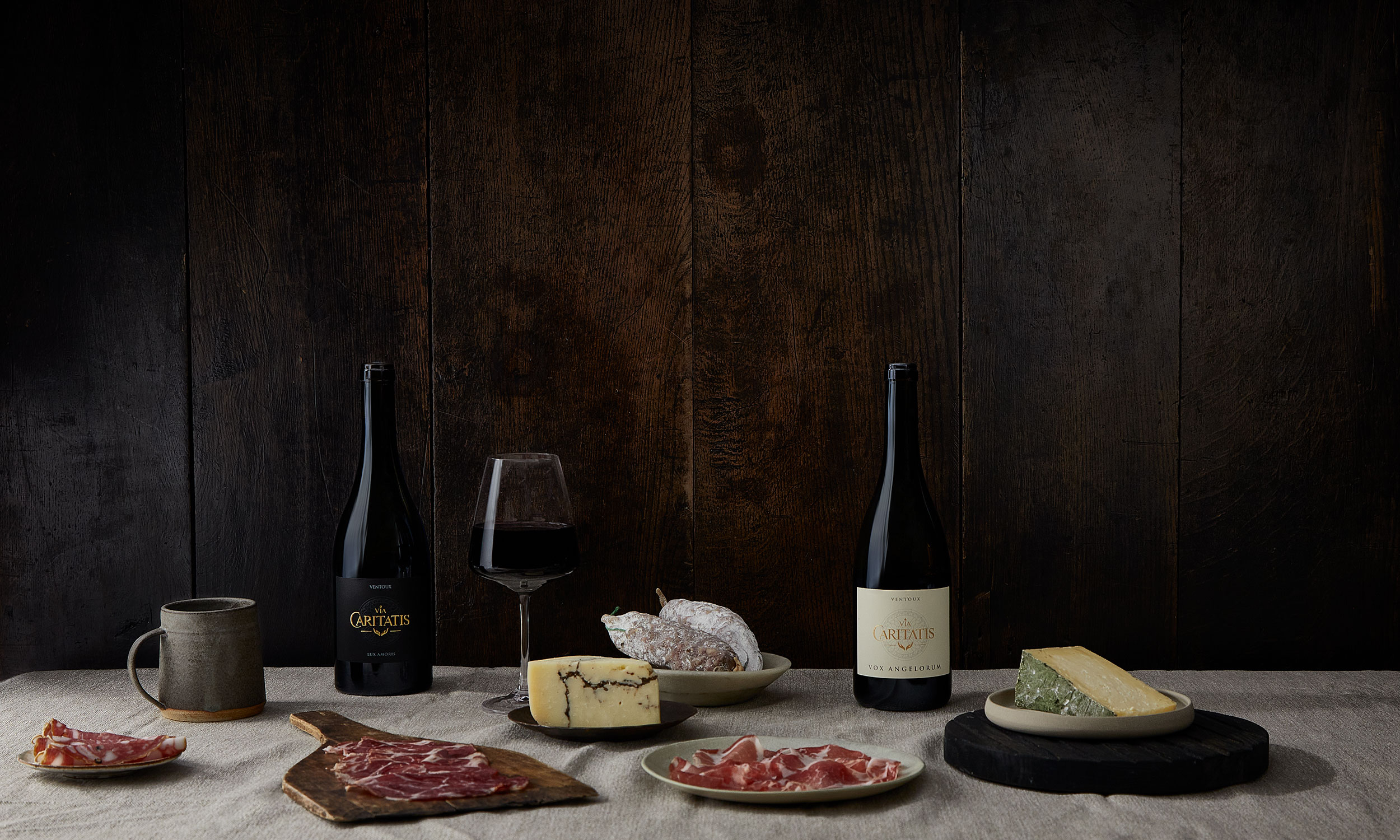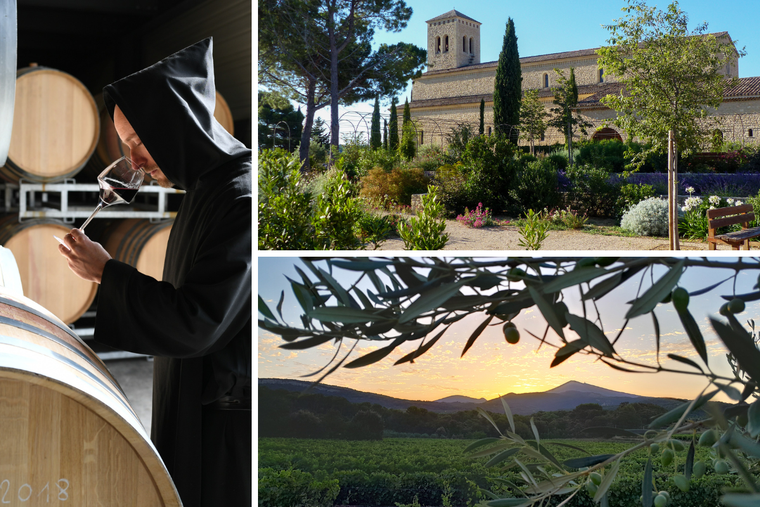At the foot of Mont Ventoux, in the sun-drenched southern French region of Provence-Alpes-Côte d’Azur, the Benedictine abbey of Le Barroux has become internationally known as a beacon of monastic renewal — drawing pilgrims from across Europe for its Gregorian chant, traditional liturgy and fidelity to the Rule of St. Benedict. In the spirit of ora et labora, the monks have long cultivated the land as they have cultivated souls.
When they began bottling the fruit of their vineyards under the name Via Caritatis, in partnership with local winegrowers, it was as a cultural and spiritual response to a world increasingly detached from both the soil and the sacred. The goal was not only to revive monastic winemaking, but to help neighboring winegrowers remain rooted on historic lands where producing high-quality wine is often difficult and economically precarious.
That story has since ripened. Now, in what will be a world first, the community is preparing to build a museum devoted entirely to abbey wines: not only as a tribute to a glorious tradition but as an act of reconstruction, an invitation to recover what the monks call the “civilization of wine.”
The idea is to make tangible again the spiritual scope of the vine: its biblical roots, its monastic cultivation, and its once-central place in Christian Europe. In an interview with the Register, Gabriel Teissier, director of development at Via Caritatis, claimed that the project will offer an immersive experience, designed to help people rediscover that the culture of wine is, at its heart, a religious culture.
Wine as a Sacred Sign
From the time of Christ, wine has held a privileged place in the Christian tradition, as a vessel for meaning, a sign of divine love. From Noah’s post-flood vineyard to the miracle at Cana, to Christ declaring “I am the true vine” (John 15:1), the vine is a thread that winds through Scripture, where it is mentioned more than 400 times.
The museum will reflect this theological depth. Visitors will encounter the religious and agricultural heritage of monastic winemaking, the deep connections between monastic life and the land, and the way wine was seen not merely as a beverage, but as a path toward communion with God.
“The goal is to help people rediscover what wine meant to Christian Europe and how monks for centuries sought God even through the cultivation of the vine.” Teissier said.
The project is ambitious. The team have already submitted architectural plans to local authorities for a monastically inspired building that will house the museum and a Via Caritatis tasting cellar. The structure will resemble a historic abbey, complete with arches and stonework, blending organically into the Provençal landscape. The first floor will host the museum itself, while the cellar below will offer tastings and community events.
Among the museum’s prized artifacts is a recently discovered papal seal belonging to Pope Clement V (who reigned in the 14th century) that was found by a local farmer only a few hundred meters from the abbey. For Gabriel Teissier, this seal serves as a kind of providential blessing. “It is as if the Pope himself placed his stamp on our project,” he said with a smile.
The exhibits will also tell the story of famous vineyards founded by monks, including Clos de Vougeot, Romanée-Conti, Chablis, and others, reminding visitors that all the wines from the Bourgogne region were initially developed by religious. Many of France’s finest terroirs — a French word meaning taste of the land, for how a vineyard’s soil, weather and surroundings shape the flavor of the wine — also began as monastic experiments in stewardship and discipline, a proof that faith and excellence in craftsmanship go hand in hand.
 Le Barroux Abbey(Photo: Copyright Le Barroux Abbey)
Le Barroux Abbey(Photo: Copyright Le Barroux Abbey)
Like all buildings designed to stand the test of time, this museum will be built stone by stone and, in this case, box by box. Indeed, as part of a fundraising campaign, donors are invited to purchase wine in direct support of the project. “Every case of wine purchased is a stone added to the edifice,” Teissier explained. In this way, the work of the vineyard becomes the very means by which the cultural and spiritual monument is brought to completion.
De-Christianization and the Decline of Wine Culture
But this project is also a response to a deep and modern crisis: the collapse of wine culture in contemporary society. While the museum will celebrate the glory of monastic winemaking, the monks at Le Barroux don’t shy away from the hard truths. “The wine crisis is real, consumption is declining, and sales are falling,” Teissier continued. “And the younger generations are either abstaining entirely or drinking dangerously.”
He attributes much of this not to changing tastes, but to cultural rupture, caused by what he describes as a “deficit of transmission.” In the past, wine was passed down as a craft, a symbol, and a tradition within families and communities. It was part of daily life, of Sunday dinners and sacred celebrations. Today, however, wine is often lumped in with all other forms of alcohol, demonized in public discourse, and stripped of its cultural and spiritual meaning.
 The wine of Le Barroux Abbey(Photo: Copyright Le Barroux Abbey)
The wine of Le Barroux Abbey(Photo: Copyright Le Barroux Abbey)
This rupture, the wine expert believes, is not accidental, but intimately tied to the de-Christianization of Western societies. The loss of religious faith has not only emptied churches, it has also emptied cellars of their meaning.
In a world that no longer knows how to read signs or interpret symbols, wine becomes just another consumer good — either glamorized for luxury or abused as a vice. The museum, then, becomes a prophetic space for new evangelization through culture. It invites visitors to rediscover wine as a symbol, ultimately a sign of divine charity.
“It’s like that old proverb,” Teissier mused. “When the wise man points to the moon, the fool looks at the finger. Wine is the finger. It points to something greater.”
Ultimately, the Museum of Abbey Wines will be about communion: between man and nature, man and history, and, above all else, man and God. It offers an opportunity to re-root our modern lives in ancient truths, truths that have the power to nourish both body and soul. It’s a place where Catholic culture, so often on the defensive, reclaims its authority to inspire, to educate and to beautify.
If all goes according to plan, the museum will open its doors in December 2026. Until then, Teissier and the Via Caritatis team continue to plant, build and pray. Their hope is that, through wine, more people will discover — or rediscover — a taste for wonder, gratitude and grace.

